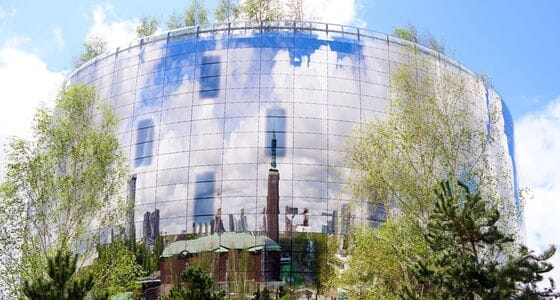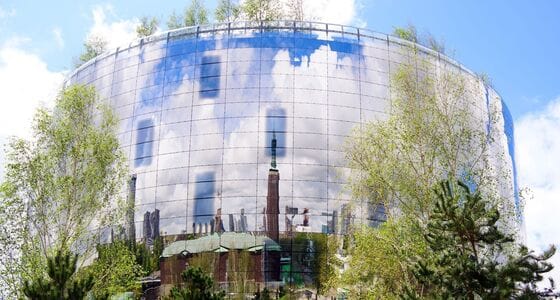The Dutch port city of Rotterdam has a new allure: the warehouse of the Boijmans Van Beuningen Art Museum is the newest part of the stunning skyline. The all-round building is also the world’s first fully accessible museum repository.
The valuable collection of the Boijmans Museum includes about 151,000 works from seven centuries. Paintings, photographs, objects, ceramics, design, drawings and prints are stored, preserved and restored in the warehouse – before the eyes of visitors. “The depot is the museum’s engine room,” Director Sgarrel X said when introducing the building. Visitors can look behind the scenes and get an impression of the group at the same time.
The former warehouses were insufficient and, above all, no longer safe for collection, which is estimated to be worth more than eight billion euros. The museum building was flooded several times. The building is currently undergoing extensive renovations, but due to the increased risk of flooding due to climate change, housing in the basement rooms was not an option.
The previous manager wanted a publicly accessible warehouse. He said museums usually only show six to ten percent of their collections to visitors. “We want to share the whole group with everyone.” The artworks are not displayed as they are in the museum itself. They are hung on large sliding metal grids, in drawers or on shelves.
The building in Museum Park Rotterdam was designed by world-renowned architects MVRDV. Architect Winnie Maas chose the circular shape. “The warehouse should be open and attractive in all aspects.” The base is much smaller at the bottom than at the top – like a cup or an egg cup. The architect admitted that he was also inspired by a chrome-plated fruit bowl from an inexpensive furniture store. Rotterdam’s city skyline and park trees are reflected in the facade. “The building integrates with the environment,” said Maas. Trees were also planted on the roof terrace, which is 35 meters high.
Wide staircases are central to the interior. They cross the courtyard, six stories high. From the stairs, you can see 13 floating glass facades through which artworks can be viewed. These include a painting by Karel Fabritius (1622-1654) and a bust of Auguste Rodin (1840-1917).
For security reasons, visitors are not allowed to search the shelves or open the drawers themselves. You will be guided through the rooms in groups. Especially sensitive objects such as photos or graphics can be seen on request.
The objects are stored in five different climate zones, depending on the material and size. It can also be restored in the warehouse, as is currently the case with a painting by Vincent Van Gogh.
© dpa-infocom, dpa: 211102-99-832194 / 3








